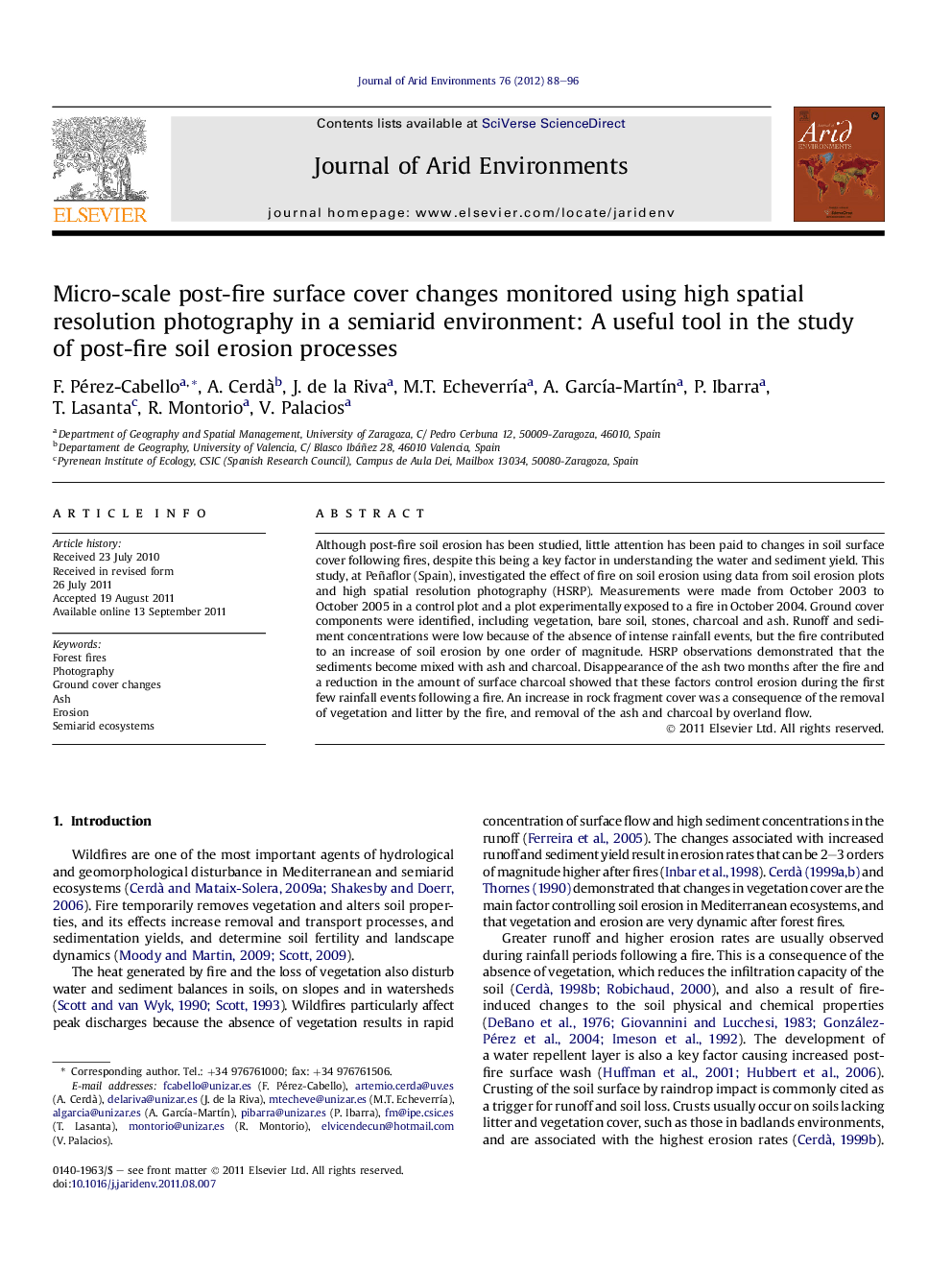| Article ID | Journal | Published Year | Pages | File Type |
|---|---|---|---|---|
| 4393406 | Journal of Arid Environments | 2012 | 9 Pages |
Although post-fire soil erosion has been studied, little attention has been paid to changes in soil surface cover following fires, despite this being a key factor in understanding the water and sediment yield. This study, at Peñaflor (Spain), investigated the effect of fire on soil erosion using data from soil erosion plots and high spatial resolution photography (HSRP). Measurements were made from October 2003 to October 2005 in a control plot and a plot experimentally exposed to a fire in October 2004. Ground cover components were identified, including vegetation, bare soil, stones, charcoal and ash. Runoff and sediment concentrations were low because of the absence of intense rainfall events, but the fire contributed to an increase of soil erosion by one order of magnitude. HSRP observations demonstrated that the sediments become mixed with ash and charcoal. Disappearance of the ash two months after the fire and a reduction in the amount of surface charcoal showed that these factors control erosion during the first few rainfall events following a fire. An increase in rock fragment cover was a consequence of the removal of vegetation and litter by the fire, and removal of the ash and charcoal by overland flow.
► We present a technique (HSRP) for monitoring post-fire ground cover changes. ► HSRP is the acronym of High Spatial Resolution Photography. ► We investigated the effect of fire on soil erosion using soil erosion plots and HSRP. ► Ash and charcoal control erosion during the first rainfall events following a fire. ► Three months after fire, changes on rock fragment cover alter soil erosion response.
